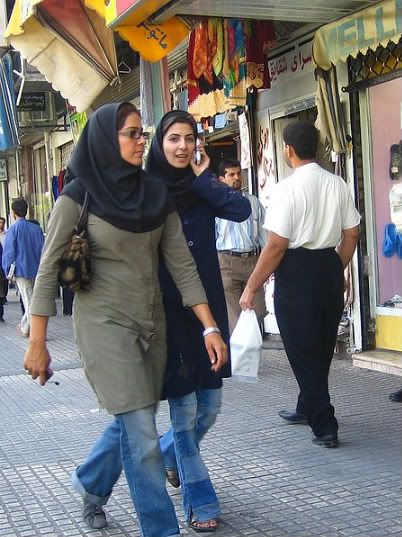With reporting opportunities strictly limited in Iran, images of Iran women carry the narrative. Much of the media focus is on young attractive women. The author wonders about complexities hidden behind the emerging icons.
by Latoya Peterson – with Women's Media Center – for Women News Network
 Images are driving the Western response to the Iranian elections. The media, hampered in their ability to report from the ground, has elected to go with citizen videos and photographs of the rising civil unrest. One early narrative that emerged, before the demonstrations against the results of the election, was of a beautiful Iranian woman, in modern clothes, wearing a loose headscarf and casting her vote.
Images are driving the Western response to the Iranian elections. The media, hampered in their ability to report from the ground, has elected to go with citizen videos and photographs of the rising civil unrest. One early narrative that emerged, before the demonstrations against the results of the election, was of a beautiful Iranian woman, in modern clothes, wearing a loose headscarf and casting her vote.
We can't predict the image that will eventually represent the Iranian elections as the situation grows more serious each day. The original iconography of painted hands—with green representing the regime's chief challenger Mir-Hossein Mousavi—has given way to palms painted red, to commemorate those who are dying. A video is circulating of a woman known as "Neda," who was killed during the protests and is becoming a symbol for the protestors who feel betrayed by their government. One site proclaims, "We Are All Neda."
However, the pre-protest narrative needs a bit more analysis. One of the most recognizable photographs was shot by Atta Kanare for Getty Images. A young woman stands facing the camera, a stern expression on her face and lips painted peach. A trendy pink and purple headscarf and sunglasses complete the look and she stares directly at the lens, holding up her ink-stained index finger to prove she voted. Some journalists and bloggers have noticed that this and other photographs taken before the election results were announced, of proud young women lining up to cast their ballots, seem to focus on the beauty of the women engaged in political action, and this trend has continued in documenting the protests. In the midst of scenes of chaos, smoky streets, and anger, small symbols of beauty continue to emerge—a hand with manicured red fingernails clutching a pamphlet, or a bright yellow headscarf framing a waterfall of chestnut hair.
Sex sells, but so does Iranian beauty, compelling even those who are disinterested in politics and current events to pay attention, if for no other reason to find out why the alluring girl in the photo has painted palms while she flashes a peace sign. Advertising agencies understand that attractiveness draws people in, forcing them to pay attention. In addition, photographers are known for working toward a poignant, beautiful, and memorable picture, so their focus on beauty should come as no surprise. However, is the narrative around what's happening in Iran becoming dominated by the idea of what is beautiful?








1 comment:
Readers might be interested in a prescient 2006 report that traces the history of Iranian women’s struggles for their rights. Iranian women have long allocated funds for women's empowerment, by working with civil society groups, and by organizing workshops and educational programs. They are also leading in the use of electronic and mass media as part of their push for rights. Its key finding? “The struggle for women’s rights is fully intertwined with the larger struggle for democracy.” The report can be found at: www.huntalternatives.org/iran.cfm
Post a Comment